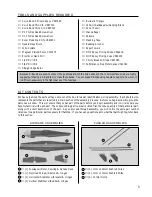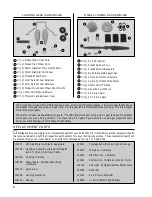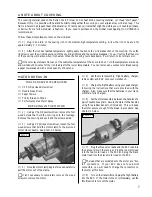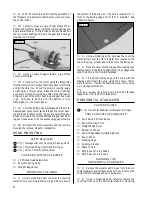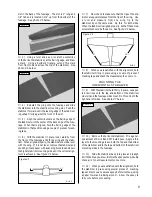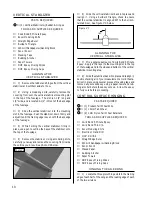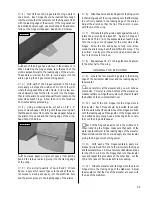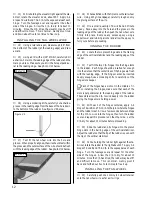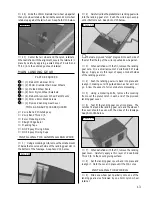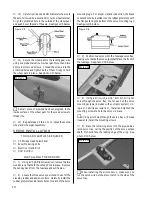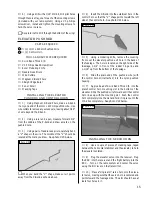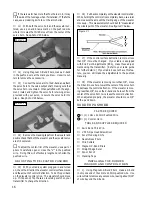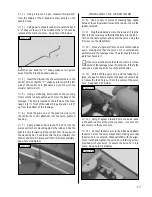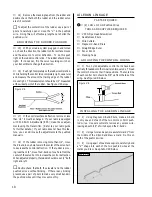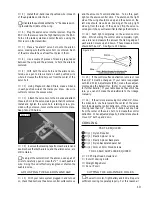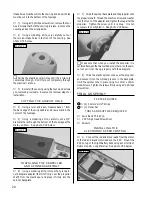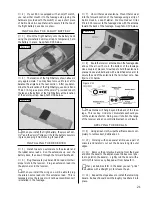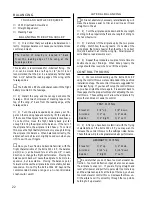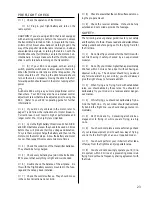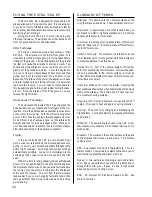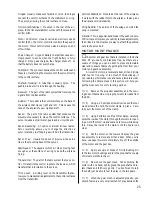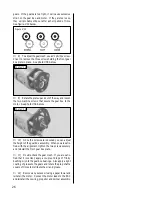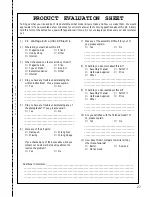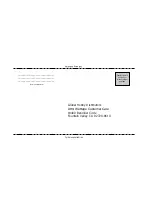
19
❑
5) Install the Z-bend in each pushrod wire into each
of the adjustable control horns.
☛
Orientate the pushrods so that the "V" bends are point-
ing toward the middle of the wing.
❑
6) Plug the aileron servo into the receiver. Plug the
ESC into the receiver and the flight battery into the ESC.
Turn on the radio system and center the servo using the
trim lever on the transmitter.
❑
7) Place a "dual arm" servo horn onto the aileron
servo, making sure that the servo horn is centered. Each
of the arms should have at least four holes in them.
❑
8) Use a couple of pieces of masking tape, taped
between the wing and the ailerons, to hold the ailerons
centered.
❑
9) With both the servo horn and the ailerons cen-
tered, use a pen to draw a mark on each pushrod wire
where it crosses the third hole out from the center of the
servo horn.
❑
10) Using Magnum Z-Bend Pliers, make a Z-bend
in each pushrod wire at the marks you drew. Use wire
cutters to remove the excess wires.
❑
11) Attach the servo horn to the Z-bends and attach
the servo horn to the servo, making sure that it's centered.
Install and tighten the servo horn retaining screw, pro-
vided with your servo, to secure the servo arm into place.
See photo # 30 below.
Photo # 30
❑
12) Remove the masking tape from each aileron and
double check that both ailerons, and the aileron servo, are
still centered.
☛
To adjust the center-trim of the ailerons, use a pair of
pliers to carefully open or close the "V" in each pushrod
wire. Doing this will effectively lengthen or shorten the
pushrod wires.
ADJUSTING THE AILERON LINKAGE
❑
13) With your radio system plugged in and turned
on, check the directions the aileron control surfaces move
and the amount of control deflection. To do this, push
right on the aileron control stick. The aileron on the right
side of the wing should move up and the aileron on the
left side should move down (looking at the wing right
side up, from the rear). If they do not, flip the servo re-
versing switch on your transmitter to change the direction.
❑
14) Push right completely on the aileron control
stick. While holding the control stick completely right,
use a ruler and measure the amount the trailing edge of
each aileron moves up and down. These measurements
should both be 1/4".
See figure # 10 below.
Figure # 10
❑
15) If the control surface deflection is more or less
than 1/4" it must be changed. If your radio is equipped
with End Point Adjustments (EPA), make those adjust-
ments using the transmitter. (Refer to your radio guide
for further details.) If your radio does not have this fea-
ture, you can still make the adjustments to the linkage
manually.
❑
16) If the ailerons are moving
more
than 1/4", move
the Z-bends in one hole toward the center of the servo
horn to decrease the control deflection. If the ailerons are
moving
less
than 1/4", move the Z-bends out one hole
from the center of the servo horn to increase the control
deflection. When adjusted properly, both ailerons should
move 1/4" both up and down.
TOOLS AND SUPPLIES REQUIRED
COWLING
❑
# 0 Phillips Head Screwdriver
❑
Excel Modeling Knife
❑
Straight Edge Ruler
❑
Pen or Pencil
CUTTING THE AIR-INTAKE HOLES
☛
The electric motor, flight battery and ESC all require
sufficient cooling to operate properly. For this reason air
PARTS REQUIRED
❑
{1} Nylon Propeller
❑
{1} Plastic Spinner Cone
❑
{1} Plastic Spinner Backplate
❑
{1} Nylon Backplate Spacer Set
❑
{2} 3mm x 10mm Wood Screws
18
19
20
21
22

